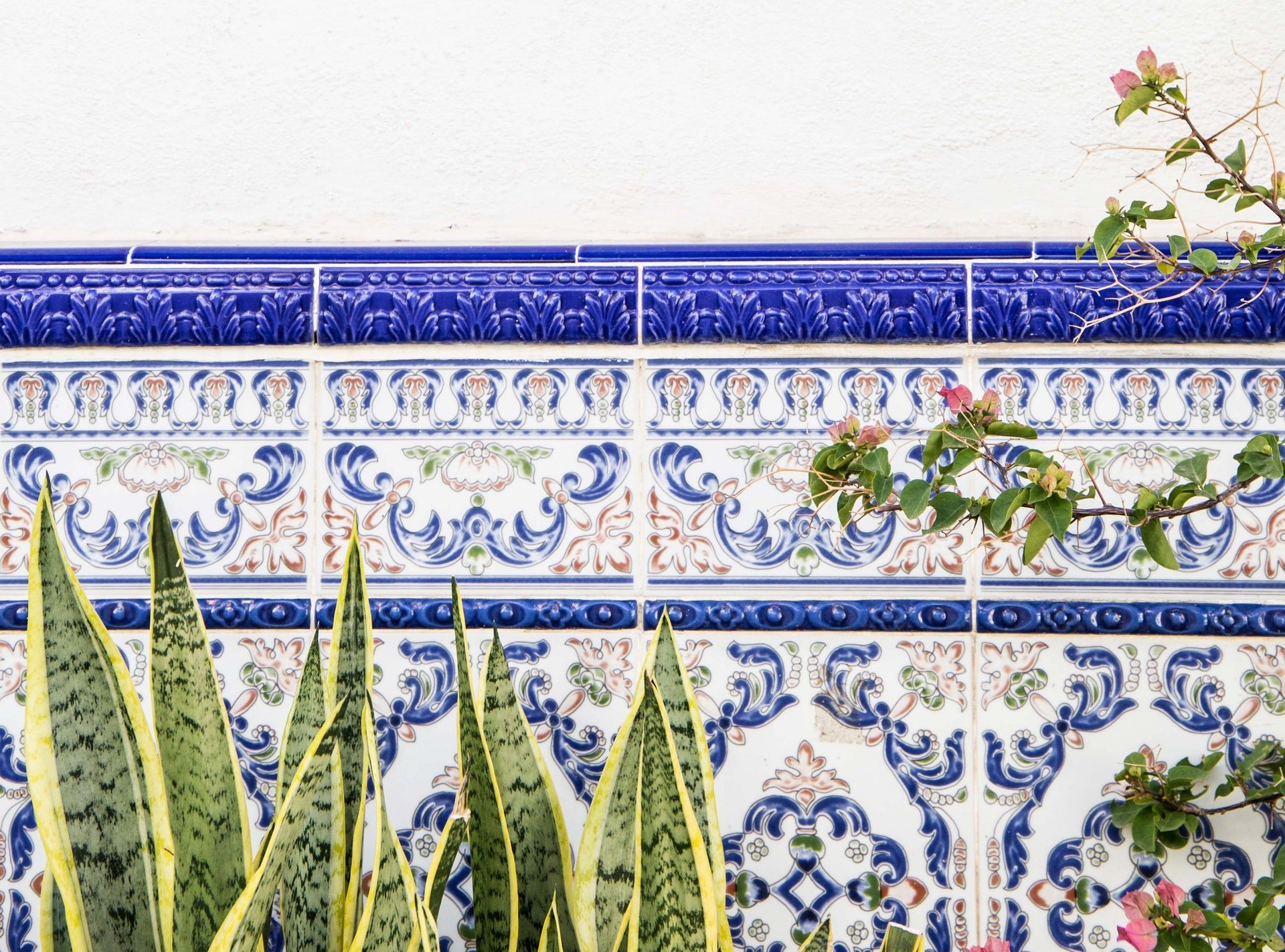March 27, 2020
Some of our customers may be unfamiliar with terms used in the tile industry. We’re here to help. We’ve organised the different types of tile into a simple, easy-to-understand guide so you can make the most educated decision. What is ceramic tile? This type of tile is made of clay and sand, which are turned into a fine powder. Water is added before everything is compressed into a mould. The moulds are then dried, primed, painted, glazed and fired in a kiln at about 1,000 degrees Celsius. What is porcelain tile? Porcelain is similar to ceramic, but the clay used in construction is much denser than that used in ceramic. Additionally, feldspar is added, and it is baked at about 1,400 degrees Celsius, making it harder than ceramic. What is granite tile? The hardest material commonly used for tiles, granite is formed when melted magma crystallises. With a polished finish, these crystals can then shine and sparkle. What is limestone tile? Limestone is a sedimentary rock formed when organic matter consolidates. Since each piece is different, each has a unique colour. However, it is more prone to chipping than harder materials like porcelain and granite. What is sandstone tile? This is a sedimentary rock formed by compressed sand. The surface is hard but porous, so it will need sealing to protect it. However, large flag sandstone tiles are very popular when used outdoors. What is slate tile? Slate is known for its ability to be split into sheets. It is durable and available in many colours and textures. ‘Riven’ slate can give slate a natural, untouched look, while ‘honed’ and ‘brushed’ slate are designed to make for a smooth surface. But some of the darker honed slates can scratch. What is terracotta tile? Terracotta is composed of clay that’s moulded and then baked in a kiln. It can be made by hand for a more rustic look or factory-produced to achieve a more polished look. On the downside, terracotta chips fairly easily and must be sealed to prevent water damage, as the surface is porous. What is travertine tile? Made by hot mineral springs, travertine is known for the resulting pits in its surface. Both ‘filled’ and ‘unfilled’ finishes are available. Filled travertine uses resin of the same colour to fill the pits, whereas unfilled travertine uses grout for this purpose. Periodically, the filling will have to be replaced in some spots. What is glazed porcelain? Glazed porcelain has a layer of glassware on top of a porcelain base for added hardness. It is also known as semi-vitrified tile. What is full bodied porcelain? Otherwise called fully vitrified tile, full bodied porcelain is constructed using a lone layer of porcelain. The pigmentation is therefore the same throughout. What does vitrified mean? Fully vitrified tile has a moisture absorption rate of less than 0.5%. What is encaustic tile? Encaustic tile is made of clay and has a pattern engrained in its surface. While encaustic tiles used to have the patterns painted on by hand, modern methods involve a mould of the inlay and tile baked together with coloured clay used to fill around it. What is frosted glass tile? Frosted glass tile is made using regular glass that's sandblasted or acid etched to give it the ‘frosted’ appearance. What is antique tile finish? Antique tile finish mimics the look of an older tile whose original finish has worn down due to traffic. Antique tile is ground down to accomplish this. What is brushed tile finish? This is mostly used in slate tile, as it smooths the rigid edges without ruining the overall look of the slate. What is crackle glaze finish? A crackle glaze finish uses deliberate cracks to give an aged look. Nowadays, the glaze is made to shrink during the drying process, but it used to be fired then placed in freezing temperatures so it would expand then contract quickly, causing cracking. What's the difference between ‘honed’ and ‘filled & honed’? Honed tile has all the surface irregularities removed in the manufacturing process. Filling is mostly used in natural stone tile that has pitting in the surface for added strength. The honing process is then done once it is filled for smoothness. What is iridescent tile? This is tile that appears to have a different colour when looked from a different angle. What is polished finish tile? Polished finish tile is typically a porcelain or natural stone tile that is machine polished to give it a bright shine. It’s different from high glazed tile, which has a coating layered onto it. What is matt finish tile? Matt finish tile is a tile that has a very dull, non-reflective surface. What is satin finish tile? Satin finish has a slight shine, especially when viewed from a certain angle. What is semi polished finish tile? Also called ‘lappato’, semi polished finish tile is slightly textured when first made. An abrasive diamond wheel is then used to polish about half the surface, leaving the other half still textured. What is split face tile? Split face tile is larger tile constructed by gluing pieces of natural stone together. Although it doesn't require grouting, it also should only be used in dry areas. What is ‘tumbled tile’? Tumbled tile is made when natural stone tile is placed in a drum with water, sand and rocks and spun. The other materials smooth the tile, making the edges more rounded. What is twin charged porcelain tile? Twin charged porcelain tile is made using a press to create a thicker tile of two different colours. This type will last a long time and is perfect for high traffic areas. What is bevelled edge tile? A bevelled edge tile slopes down toward the edge. It creates a surface that reflects light and is more defined. What is bullnose edge tile? Also called round edge tile, bullnose edge tile has a single or double round edge shaped like the letter 'L’. It can be used on steps and windowsills without separate trim. What is rustic edge tile? Rustic edge tile has a purposely inconsistent surface that gives the tile a handmade look. What is inkjet tile printing? Inkjet tile printing works much like a computer printer. The ink is shot as the tile is passed through a belt. Before this, rollers were used to place the pattern onto a tile. What does ‘shade variation’ mean? A tile or set of tiles exhibits shade variation when the colour and/or texture vary from one tile to the next. In some cases, this is done on purpose, such as when trying to mimic the look of another material. What does ‘tile density’ mean? Tile density is the main factor when determining whether the tile should be used on the wall or floor. Tile of a higher density is fired at a higher temperature, so it can withstand heavy traffic and is best used for flooring. What is meant by water absorption in tiles? Water absorption is the amount of moisture it can take in. Porcelain tile absorbs less than 0.5% of water and some types of ceramic tile can take in 10% and even higher. This must be kept in mind when deciding placement of the tile. What is a wet area/wet room? A wet area/wet room is a shower area that diverts all the water into a drain that’s built right into the floor. What’s a tile biscuit? A tile biscuit is the base structure of glazed tile, typically clay or porcelain. What is meant by listel/listello? A listel or listello is a border or strip meant to separate two patterns or materials, as well as to enhance the look of wall tiles. What is a grout joint? A grout joint is an area of grout in between tiles. It is not recommended for tiles to be butted together. Therefore, grout is used to prevent moisture infiltration and to limit vibration and expansion/contraction from changing temperatures. It is available in many colours just like tile is.



